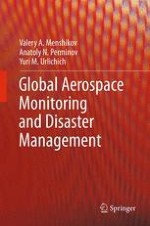2012 | OriginalPaper | Buchkapitel
4. The Conception of the International Global Monitoring Aerospace System (IGMASS)
verfasst von : Valery A. Menshikov, Anatoly N. Perminov, Yuri M. Urlichich
Erschienen in: Global Aerospace Monitoring and Disaster Management
Verlag: Springer Vienna
Aktivieren Sie unsere intelligente Suche, um passende Fachinhalte oder Patente zu finden.
Wählen Sie Textabschnitte aus um mit Künstlicher Intelligenz passenden Patente zu finden. powered by
Markieren Sie Textabschnitte, um KI-gestützt weitere passende Inhalte zu finden. powered by
